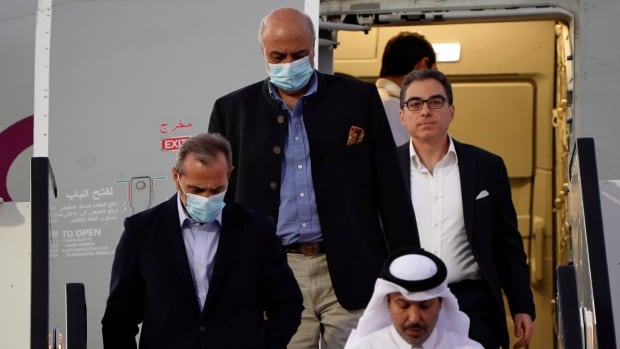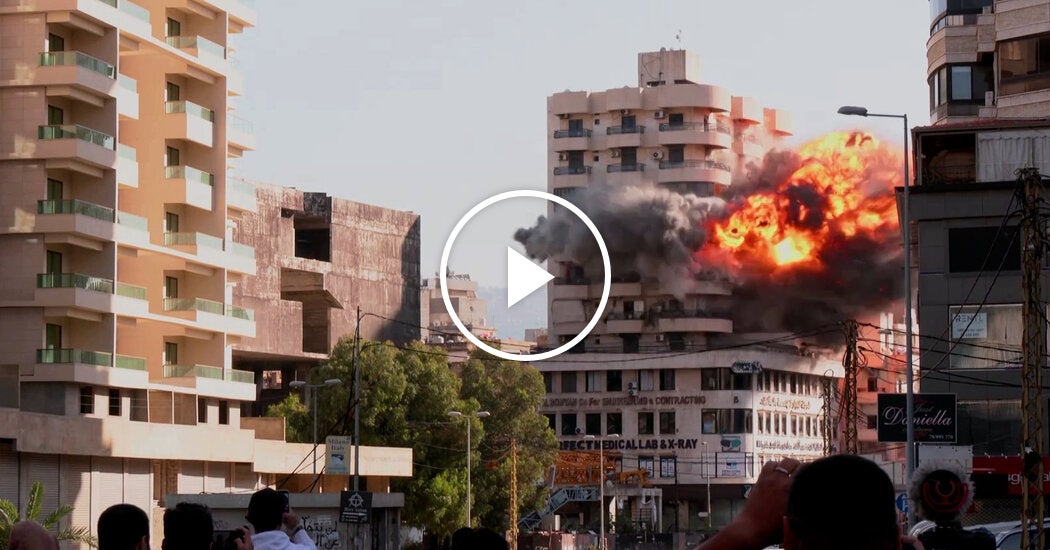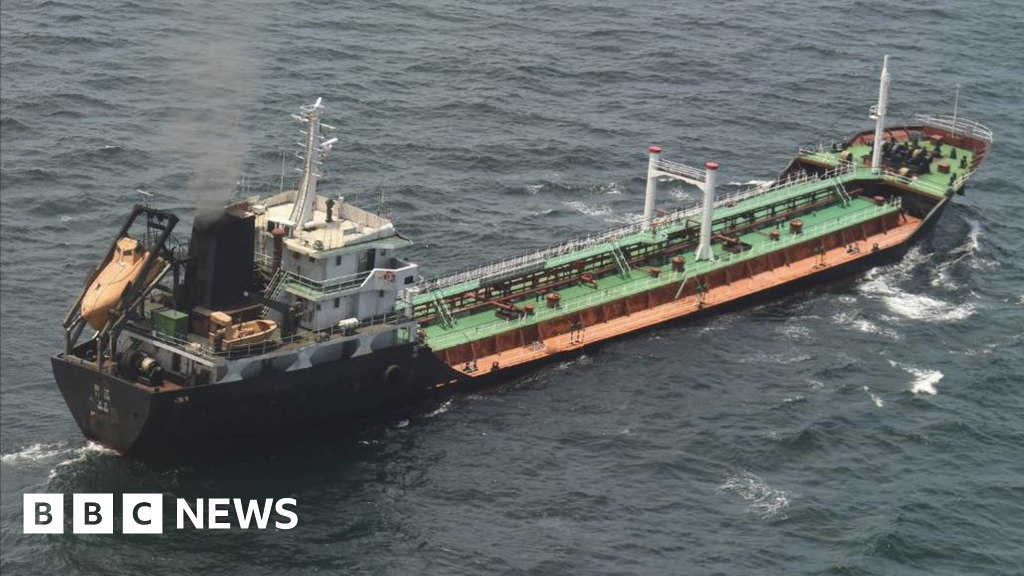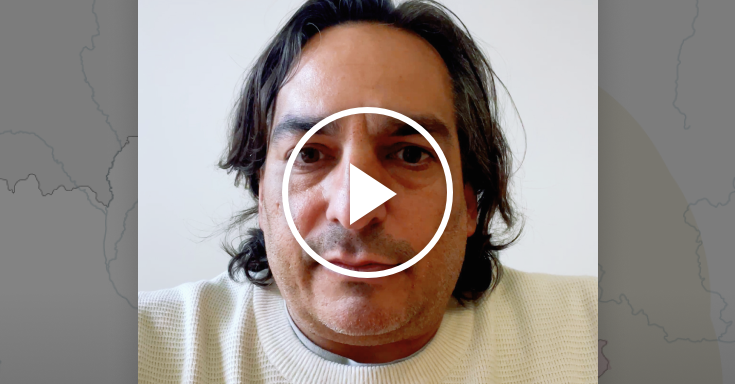Five prisoners sought by the U.S. in a swap with Iran flew out of Tehran on Monday, officials said, part of a deal that saw nearly $6 billion US in Iranian assets unfrozen.
Despite the deal, tensions are almost certain to remain high between the U.S. and Iran, which are locked in various disputes, including over Tehran’s nuclear program.
The planned exchange has unfolded amid a major American military buildup in the Persian Gulf, with the possibility of U.S. troops boarding and guarding commercial ships in the Strait of Hormuz, through which 20 per cent of all oil shipments pass.
“Today, five innocent Americans who were imprisoned in Iran are finally coming home,” U.S. President Joe Biden said in a statement released as the plane carrying the group from Tehran landed in Doha, Qatar.
After the plane slowed to a stop, three of the former prisoners — Siamak Namazi, Emad Sharghi and Morad Tahbaz — walked down the ramp and were greeted by the U.S. ambassador to Qatar, Timmy Davis.
‘Thank you for being my voice’
They hugged the ambassador and others before wrapping their arms around their shoulders and walking off to a building in the airport.
In a statement issued on his behalf, Namazi said: “I would not be free today, if it wasn’t for all of you who didn’t allow the world to forget me.
“Thank you for being my voice when I could not speak for myself and for making sure I was heard when I mustered the strength to scream from behind the impenetrable walls of Evin Prison,” Namazi said.
Siamak Namazi was detained in 2015 and was later sentenced to 10 years in prison on spying charges; Emad Sharghi is a venture capitalist sentenced to 10 years; and Morad Tahbaz is a British-American conservationist of Iranian descent who was arrested in 2018 and also received a 10-year sentence.
All of their charges have been widely criticized by their families, activists and the U.S. government.
U.S. officials have declined to identify the two other released prisoners.
Mahsa Amini’s death while in the custody of Iran’s morality police for wearing her headscarf too loosely triggered months of protests in what became one of the biggest threats the Islamic regime has ever faced. One year later, CBC’s Ellen Mauro breaks down what’s changed and what hasn’t.
In addition to the five freed Americans, two U.S. family members flew out of Tehran, according to a senior Biden administration official, who spoke on condition of anonymity when the exchange was ongoing.
Biden also announced sanctions on former Iranian president Mahmoud Ahmadinejad and the Iranian Ministry of Intelligence. He demanded more information on what happened to Bob Levinson, an American who went missing years ago.
Earlier, Iranian Foreign Ministry spokesperson Nasser Kanaani said the exchange would take place Monday after nearly $6 billion US in once-frozen Iranian assets reached Qatar.
“Fortunately Iran’s frozen assets in South Korea were released and, God willing, today the assets will start to be fully controlled by the government and the nation,” Kanaani said.
“On the subject of the prisoner swap, it will happen today and five prisoners, citizens of the Islamic Republic, will be released from the prisons in the U.S.,” he added. “Five imprisoned citizens who were in Iran will be given to the U.S. side.”
He said two of the Iranian prisoners will stay in the U.S. Meanwhile, Nour News, a website believed to be close to Iran’s security apparatus, said two of the Iranian prisoners had arrived in Doha for the swap.
Mohammad Reza Farzin, Iran’s Central Bank chief, later came on state television to acknowledge the receipt of over 5.5 billion euros ($7.9 billion Cdn) in accounts in Qatar.
Iranian leader in U.S. this week
The planned exchange comes just ahead of the United Nations General Assembly in New York, where Iran’s hardline President Ebrahim Raisi will speak.
The deal has already opened Biden to fresh criticism from Republicans and others who say the administration is helping boost the Iranian economy at a time when Iran poses a growing threat to American troops and Mideast allies. That could have implications in his re-election campaign as well.
The U.S. maintains that, once in Qatar, the money will be held in restricted accounts and will only be able to be used for humanitarian goods, such as medicine and food. Those transactions are currently allowed under American sanctions targeting the Islamic Republic over its advancing nuclear program.

Not all Iranian prisoners leaving U.S.
John Kirby, National Security Council spokesperson for the Biden administration, told CNN that ultimately only two of the Iranian prisoners freed will return to Iran, with another person to land in an unspecified third country where they also have citizenship. Two will be freed and remain in the U.S., though Kirby didn’t offer specific details.
“I don’t think there’s any cause for the American people to be concerned about that,” Kirby said, referring to the Iranians remaining in the U.S.

The U.S. and Iran remain bitterly opposed on a number of fronts.
Iran’s nuclear program now enriches closer than ever to weapons-grade levels since former U.S. president Donald Trump in 2018 unilaterally pulled out of a multilateral nuclear deal — formally known as the Joint Comprehensive Plan of Action. The U.S. reimposed sanctions on Iran, prompting Tehran to start backing away from the deal’s terms.
The head of the United Nations’ nuclear watchdog has warned that Iran now has enough enriched uranium to produce “several” bombs, though months more would likely be needed to build a weapon and potentially miniaturize it to put it on a missile — if Iran decided to pursue one.
A series of ship seizures in the Strait of Hormuz attributed to Iran have also exacerbated tensions with Washington. The Pentagon is considering a plan to put U.S. troops on board commercial ships in the strait.
Iran also supplies Russia with the bomb-carrying drones Moscow uses to target sites in Ukraine, which remains another major dispute between Tehran and Washington.









